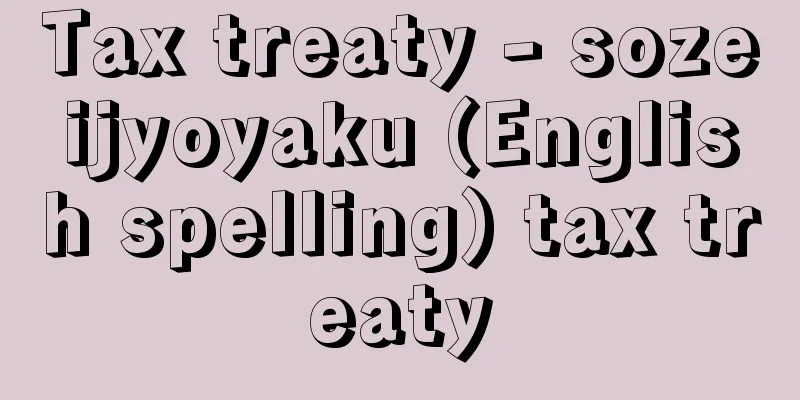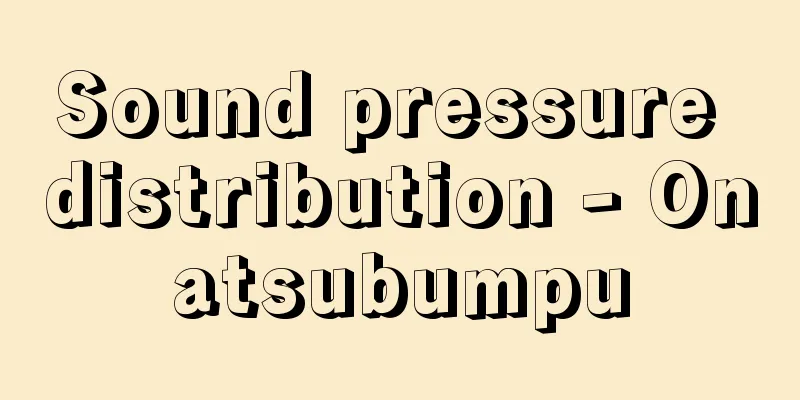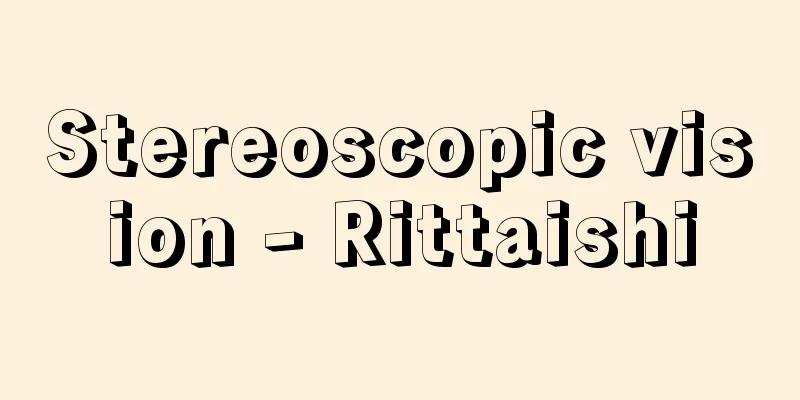Smoke - Smoke

|
Smoke is a colloidal dispersion system with gas as the dispersion medium and solid particles as the dispersoid. However, it is quite difficult to scientifically define what is usually referred to as "smoke." For example, cigarette smoke is mostly made up of fine liquid particles, and it would be more appropriate to call it aerosol or aerosol. The smoke produced when most organic matter is burned is made up of fine carbonaceous particles (soot) with diameters between 1 and 100 nanometers dispersed in the air, as well as liquid particles produced by the decomposition of fuel. Cement smoke, for example, contains larger particles (diameters of 1 micrometer or more), but at this stage it is more likely to be called dust than smoke. In the air, the settling velocity of particles smaller than 0.1 micrometers is much slower than that of larger particles, so in that sense smoke is solid particles suspended in the air up to this size. To make ink, the raw material is the tiny carbon particles obtained by burning seed oil, pine roots, etc. [Yamazaki Akira] Cultural uses of smokeIn addition to smoking and cooking (smoking), there are two uses: (1) the use of smoke's power to suffocate animals, and (2) the use of smoke's ability to rise from the earth to the heavens. The uses of smoke can be divided into (a) practical uses that use the physical power and properties of smoke to achieve actual results, and (b) symbolic uses of smoke's power and properties in religious ceremonies. The power of smoke to suffocate animals has practical applications in driving away pests and driving game animals out of holes and thickets, and in religious applications, where the smoke is used to scare away evil spirits in order to cure sick people who are possessed by evil spirits. For example, in Japan, when a person is possessed by a fox or a dog god, pine needles, chili peppers, or sulfur are burned to drive away the evil spirit. In the Americas, shamans often cure illnesses by blowing tobacco smoke on the patient. In various parts of Southeast Asia, there is a custom of purifying women who have just given birth by blowing smoke on them to drive away evil spirits. The property of smoke rising to the sky is used for communication purposes in a broad sense. In practical terms, it is used as a means of communication as a signal light. In religious ceremonies, smoke is used as a medium between heaven and earth, that is, between gods and the spiritual world and humans and this world, enabling interaction and communication between the two. In the Mayan society of Mexico, it is said that the smoke from candles used in religious ceremonies conveys words of prayer to the gods in heaven. Smoke is often used when shamans around the world enter a state of ecstasy. It is said that the smoke leads the shaman to a state of trance, summons gods and spirits, and allows them to communicate with divine spirits. Tobacco smoke is often used in the Americas. For example, during the corn harvest festival, the Bororo people of Brazil smoke many cigarettes while dancing and singing, and enter a state of ecstasy. Many indigenous people in North America offer tobacco smoke to gods and spirits, or use tobacco smoke to appease animal spirits before hunting. The Comanche offer tobacco smoke to the Great Spirit and the sun. The Blackfoot people know their guardian spirit through tobacco smoke. North American Indians also often smoked tobacco to make peace after war or conflict. It is thought that this is because tobacco smoke has the power to mediate between people and spiritual beings, or between people in conflict. Shamans in various parts of Asia, for example, often use strong-smelling incense. In addition, incense (joss sticks), which is widely used in Buddhism, and incense used in some Christian churches, are thought to be used not only because their smoke drives away evil spirits, purifies the body and mind, and purifies the environment, but also because incense has the power to mediate between gods and people, who are originally separated from each other. Another ritual in which smoke plays an important role is rain-making (ama-goi), which often involves making bonfires or burning smoky materials on mountaintops. This smoke can be interpreted as imitating rain clouds, but it can also be thought of as a symbolic means of communication with the supernatural world. [Itabashi Masami] [Reference item] | |Source: Shogakukan Encyclopedia Nipponica About Encyclopedia Nipponica Information | Legend |
|
気体を分散媒とし、固体粒子を分散質とするコロイド分散系が煙である。しかし通常いわれる「煙」を科学的に定義することはかなりむずかしい。たとえば、たばこの煙は、大部分が液体の微粒子であり、煙霧質(エアロゾル、エーロゾルとも)とまとめてよぶほうが適切である。 多くの有機物が燃焼した場合に生じる煙は、炭素質の微粒子(煤(すす))で、径が1~100ナノメートルのものが空気中に分散したものであるが、そのほかに燃料の分解によって生じた液体の微粒子も含まれる。セメントの煙などは、もっと大きな粒子(径が1マイクロメートル以上)のものを含むが、このようなものになってくると、もはや煙というよりも、塵埃(じんあい)ということが多い。空気中では0.1マイクロメートル以下の粒子の沈降速度は、これよりも大きな粒子に比べて格段に小さくなるので、その意味ではこのくらいの大きさを上限とする固体粒子が浮遊しているものが煙ということになる。 墨をつくるには、種油や松根などを燃して得られる炭素の微粒子を集めて原料にするのである。 [山崎 昶] 煙の文化的利用喫煙や料理(薫製)のほか、〔1〕煙のもつ動物を窒息させる力を利用する場合と、〔2〕煙の地から天へ昇る性質を利用する場合とがある。また、煙の利用目的としては、(a)そのような煙の物理的な力と性質を使って実際の効果を期待する実用的な使い方と、(b)煙の力と性質を象徴的に利用して宗教儀礼で用いる場合に分けることができる。 煙が動物を窒息させる力は、実用面では、害虫を追い払ったり、狩猟動物を穴や、やぶから追い出すために使われ、宗教的利用としては、悪霊に取り憑(つ)かれた病人を治すため煙で悪霊をいぶり出す。たとえば日本では、狐(きつね)や犬神などに憑かれたとき、松葉やトウガラシや硫黄(いおう)を燃やして憑き物を落とす。南北アメリカ大陸では、シャーマンがたばこの煙を患者に吹きかけて病気を治すことが多い。東南アジアの各地に、産婦に煙をかけて清め、悪霊を払う習俗がみられる。 煙が天へ昇る性質は、広い意味でのコミュニケーションの目的に利用される。実用面では、のろしとして通信手段となる。宗教儀礼においては、煙が天と地を媒介するもの、つまり、神や霊的世界と人間やこの世とを媒介し、両者の交流、通信を可能にするものとして用いられる。メキシコのマヤ人の社会では、宗教儀礼で使われるろうそくの煙は祈りのことばを天の神に伝えるといわれている。世界各地でシャーマンが恍惚(こうこつ)状態に入るときに煙がしばしば用いられる。煙がシャーマンを忘我状態に導き、神や精霊を呼び寄せ、神霊との交流をもたらすとされる。アメリカ大陸ではたばこの煙がよく用いられる。たとえばブラジルのボロロ人は、トウモロコシの収穫祭のとき呪医(じゅい)が踊ったり歌いながらたばこを何本ものみ、陶酔状態になる。北アメリカの多くの先住民の間で、神や精霊に対してたばこの煙を捧(ささ)げたり、猟の前にたばこの煙で動物霊を慰撫(いぶ)する。コマンチの人々はたばこの煙を大精霊と太陽に捧げる。ブラックフットの人々はたばこの煙の形で自分の守護霊を知る。また北米インディアンの間では、戦争や紛争のあと和解するときにしばしば喫煙が行われた。たばこの煙は人と霊的存在、対立する人間の間を仲介する力をもっているからと考えられる。においの強い香(こう)を用いることも、たとえばアジアの各地のシャーマンに多い。また、仏教で広く使われる香(線香)や、一部のキリスト教会で使われる香も、その煙が悪霊を払い、心身を清め、場を浄化するということだけでなく、本来隔絶している神と人とを媒介する力を香がもっているから用いると考えられる。 煙が重要な役割を果たすもう一つの儀礼に雨乞い(あまごい)がある。雨乞いのとき、しばしば山頂などでたき火をしたり、よく煙が出るものを燃やす。この煙は雨雲を模したものと解釈することができるが、超自然的世界との象徴的通信手段として煙が用いられていると考えることもできる。 [板橋作美] [参照項目] | |出典 小学館 日本大百科全書(ニッポニカ)日本大百科全書(ニッポニカ)について 情報 | 凡例 |
>>: Chemnitz (English spelling)
Recommend
weicher Stil (English spelling) weicherStil
…Most of these artists are unknown, but one of th...
Patrilineality
A system in which property, status, and rights ar...
Philip Showalter Hench
An American medical scientist known for his resea...
Vireonidae
…Any of the birds of the Vireonidae family of pas...
Exclusivist
…However, since parolees, as well as prisoners wh...
Irikawa - Irikawa
…(5) Hebi-sagari: The surface of a tree that spli...
Cavallini - Pietro Cavallini
Italian painter. He is considered one of the lead...
Beja (English spelling)
It is the capital of the province of the same name...
Argillic horizon
...The process in which fine clay particles move ...
Glycolipids - Glycolipids
A general term for complex lipids in living organ...
Annatto
A fat-soluble yellow pigment extracted from the ou...
Nankaido - Nankaido
In ancient times, this was an administrative regi...
Joi Sugiura
Year of death: July 24, 1761 (August 24, 1761) Yea...
Saiga (English spelling)
They are mammals of the order Artiodactyla and th...
Palindrome poem - Kaibunshi (English spelling) huí wén shī
Also called a round rhyme or round rhyme style. A ...









